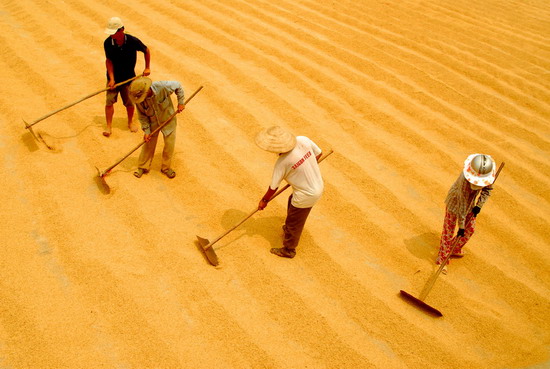In Africa, Vietnam's rice exporters see a rising market
- Clothing exports stall as TPP prospects sour
- Exports plunge in September
- US suspends new Vietnamese catfish exporter's registration
The Vietnam Food Association (VFA) is planning to increase rice exports to African countries to make up for a sharp decline in the Chinese market.
 |
| Men dry unhusked rice on a road in Viẹtnam. (Photo: Internet) |
China remains the biggest buyer of Vietnamese rice, accounting for a third of all shipments. However, exports to this market in the first eight months fell 21.4 percent year-on-year to 1.18 million tons, according to the agriculture ministry.
Sales to some African markets, on the other hand, increased significantly.
Exports to Ghana, now the second largest buyer of Vietnamese rice, surged nearly 37 percent to 343,000 tons during the period. Shipments to Angola, another potential market, rose 4.6 times in volume and 3.6 times in value.
According to VFA, Ghana’s demand for rice is around 1.6 million tons per year and the country depends on imports to cover more than half of that amount. Among its suppliers, Vietnam offers lower prices than Thailand and India.
Hoang Lam, manager of Hung Lam Joint Stock Company, one of the first Vietnamese rice companies that sell to Ghana, said the West African nation as well as other African countries favor affordable, medium-quality varieties. This means Vietnamese companies have good chances to expand their market share in Africa over the next few years.
VFA said it’s necessary to turn to Africa to ease the dependence on the Chinese market, where the management of border trade has been tightened and there’s a strong competition from a number of suppliers.
Preliminary data from the agriculture ministry showed that Vietnam’s rice exports fell 16.4 percent year-on-year to 3.76 million tons in the first nine months. The value also went down by 12.5 percent to $1.69 million.
For the first time in eight years, VFA has lowered its annual forecast for rice exports. Shipments of the whole year are now expected to be around 5.6 million tons, compared 6.6 million tons last year.

